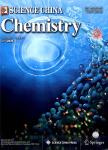Molecular ferroelectrics for efficient perovskite solar cells
Molecular ferroelectrics for efficient perovskite solar cells作者机构:Beijing National Laboratory for Molecular SciencesState Key Laboratory of Rare Earth Materials Chemistry and ApplicationsPKU-HKU Joint Laboratory in Rare Earth Materials and Bioinorganic ChemistryCollege of Chemistry and Molecular EngineeringPeking UniversityBeijing 100871China College of Chemistry and Chemical EngineeringLanzhou UniversityLanzhou 730000China
出 版 物:《Science China Chemistry》 (中国科学(化学英文版))
年 卷 期:2021年第64卷第2期
页 面:169-170页
核心收录:
学科分类:07[理学] 070205[理学-凝聚态物理] 08[工学] 080501[工学-材料物理与化学] 080502[工学-材料学] 0805[工学-材料科学与工程(可授工学、理学学位)] 0702[理学-物理学]
主 题:perovskite illumination inorganic
摘 要:During the past decade,the power conversion efficiencies(PCEs)of organic-inorganic hybrid perovskite solar cells(PSCs)have exceeded 25%[1],which is expected to be one of the candidates for the next generation of thin-film photovoltaic *** speaking,the performance of PSCs mainly depends on the light absorption capacity,defect passivation and photo-induced exciton separation and extraction of perovskite *** the light illumination,photo-induced excitons were separated and extracted by the built-in electric field of PSCs.



